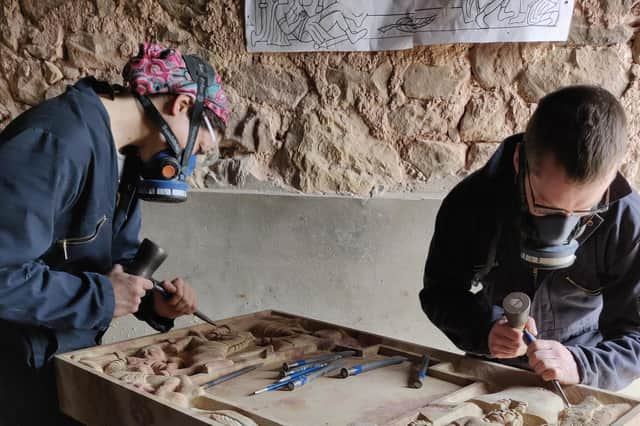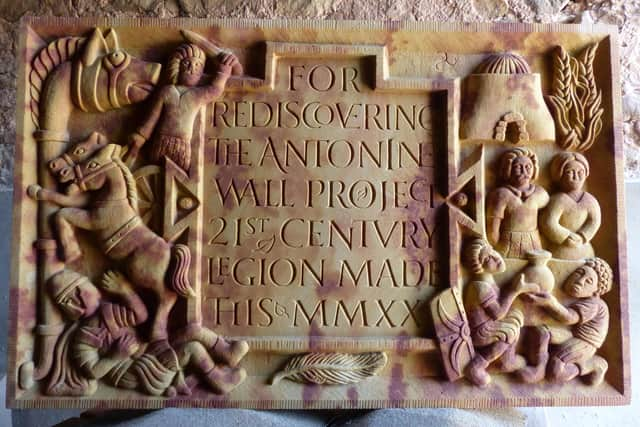Wall history on stone: Berwick carvers create sculpture for Antonine Wall project


Luke Batchelor and Jo Crossland’s initial design to scale – drawn on paper, scanned then sent by email – was chosen by the Rediscovering the Antonine Wall project.
Following a few amendments after speaking with an archaeology expert, they have now made a new distance stone that was recently completed.
Advertisement
Hide AdAdvertisement
Hide AdThey were able to continue working on the sculpture using stone sourced in Northumberland from Luke’s workshop near Belford, overlooking Holy Island, as they live together as friends in Berwick.


Jo and Luke were notified by friends at the end of 2019 about the new distance stone aspect of the project and their research before creating their initial design included a trip to the National Museum of Scotland in Edinburgh.
Although not in the design brief, they felt a Deskford Carnyx – a slim trumpet-like instrument that was used by the Caledonians to rouse fighting spirit ahead of battle – that they read about at the museum was a unique feature which deserved to be included.
It is on the left hand side of the sculpture, with a bull’s head, running from top to bottom.
Advertisement
Hide AdAdvertisement
Hide AdThey said: “Suggestions made by Dr Louisa Campbell, fellow in archaeology at Glasgow University, when we met her at the Hunterian Museum in Glasgow in February as part of our research, and the size of the inscription meant we needed to make a few changes to our initial design.
“We started carving the distance stone in mid March, with the stone cut and delivered just in time before the coronavirus lockdown.
“It was a lot of fun to do and it was a unique task for us as it involved deep carvings in fine detail.
“The stone will eventually be installed at Cow Wynd in Falkirk and it’s a nice thought that people will see it and then perhaps do their own research about the Caledonians and Romans.”
The Antonine Wall was built from around 140AD and spanned 37 miles between the Firth of Forth and the Firth of Clyde. It was abandoned by the Romans after around 20 years.